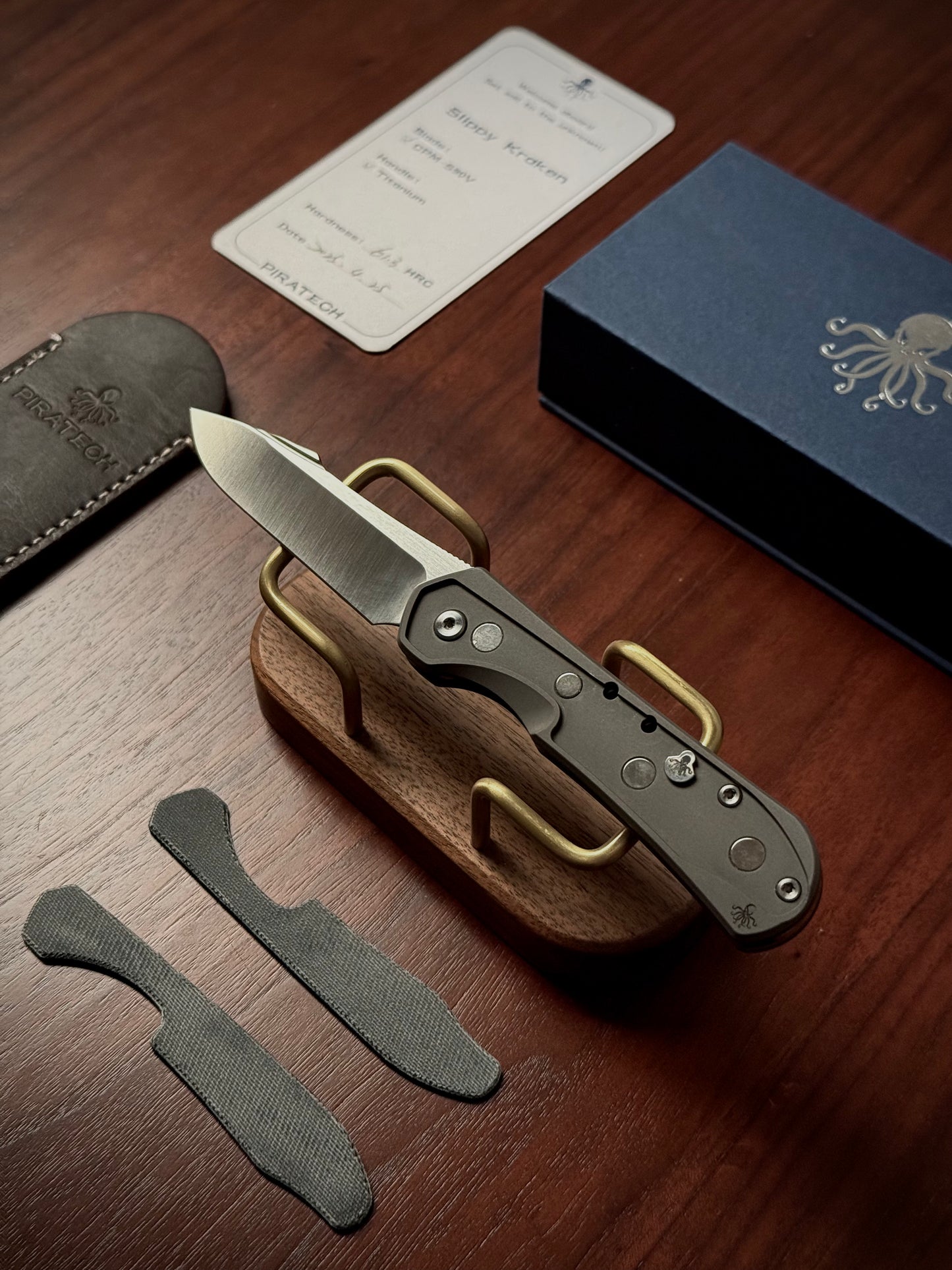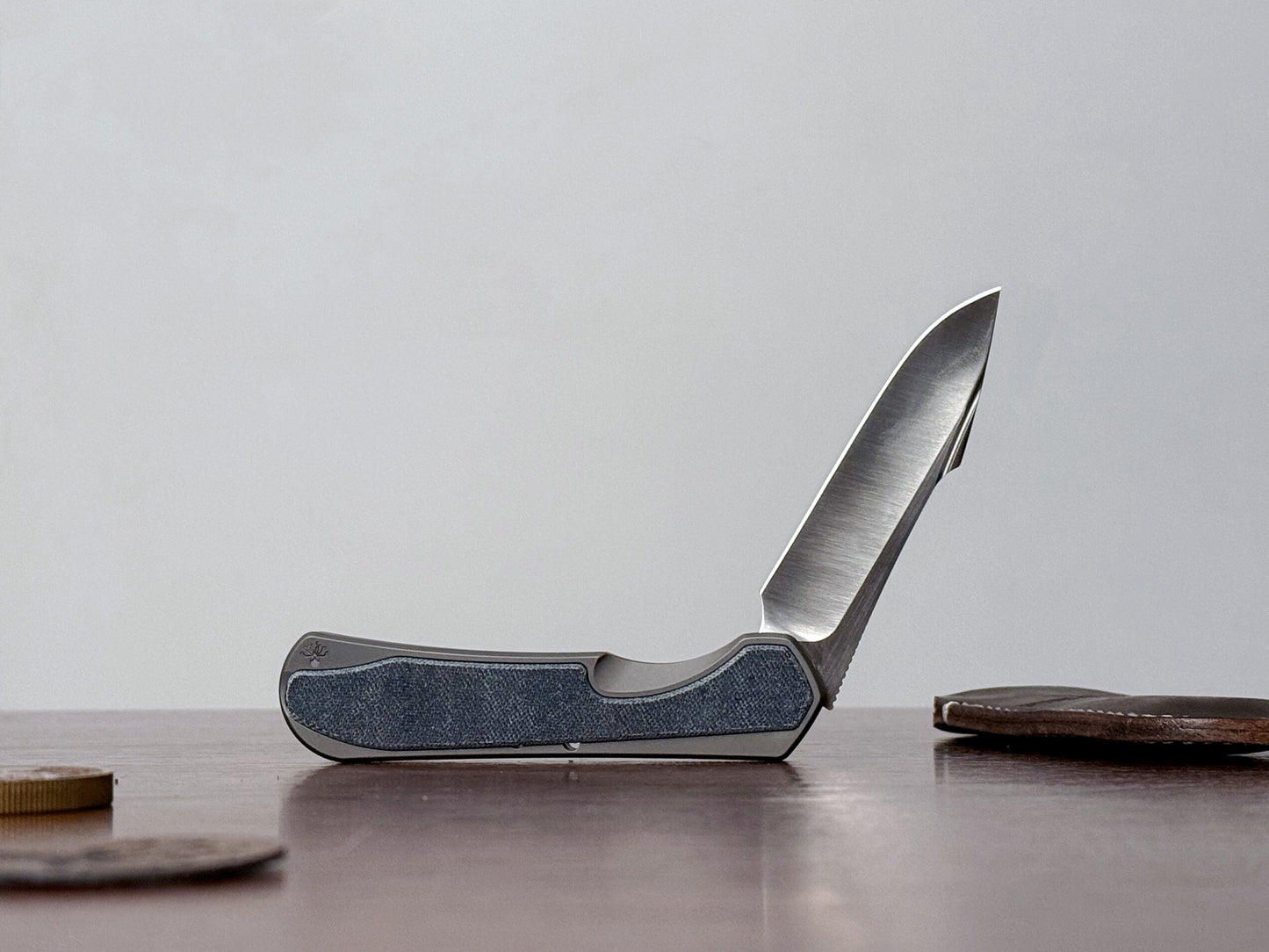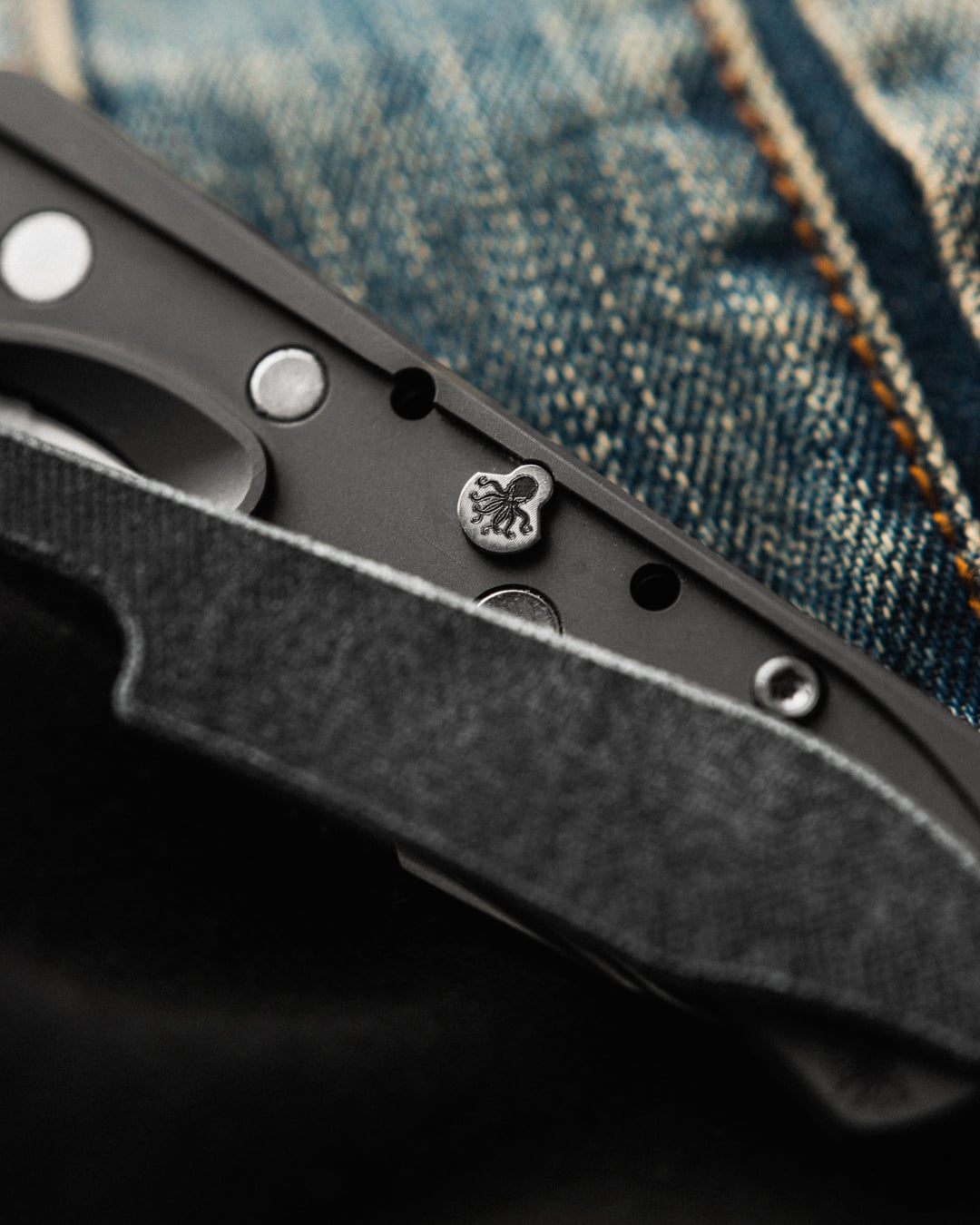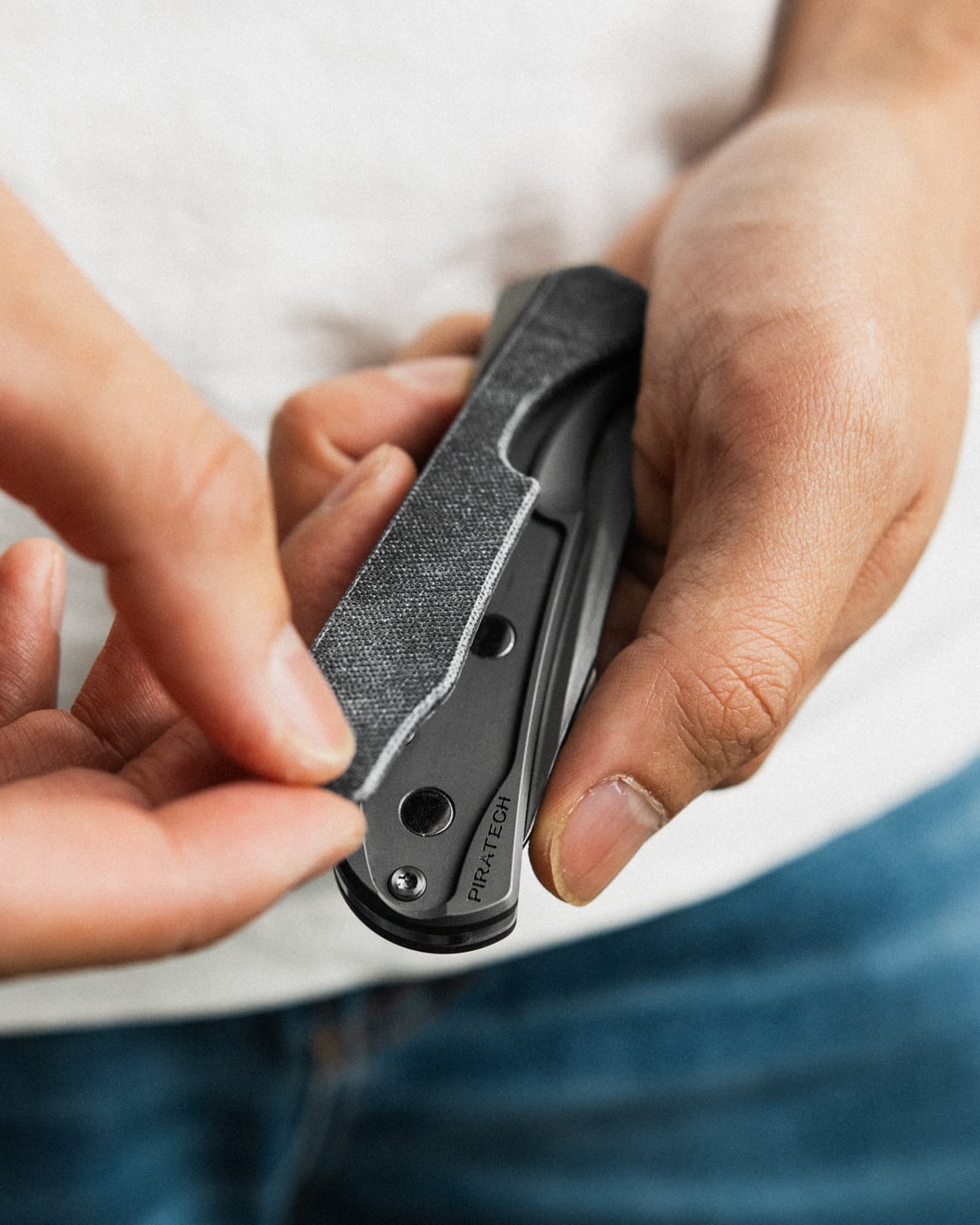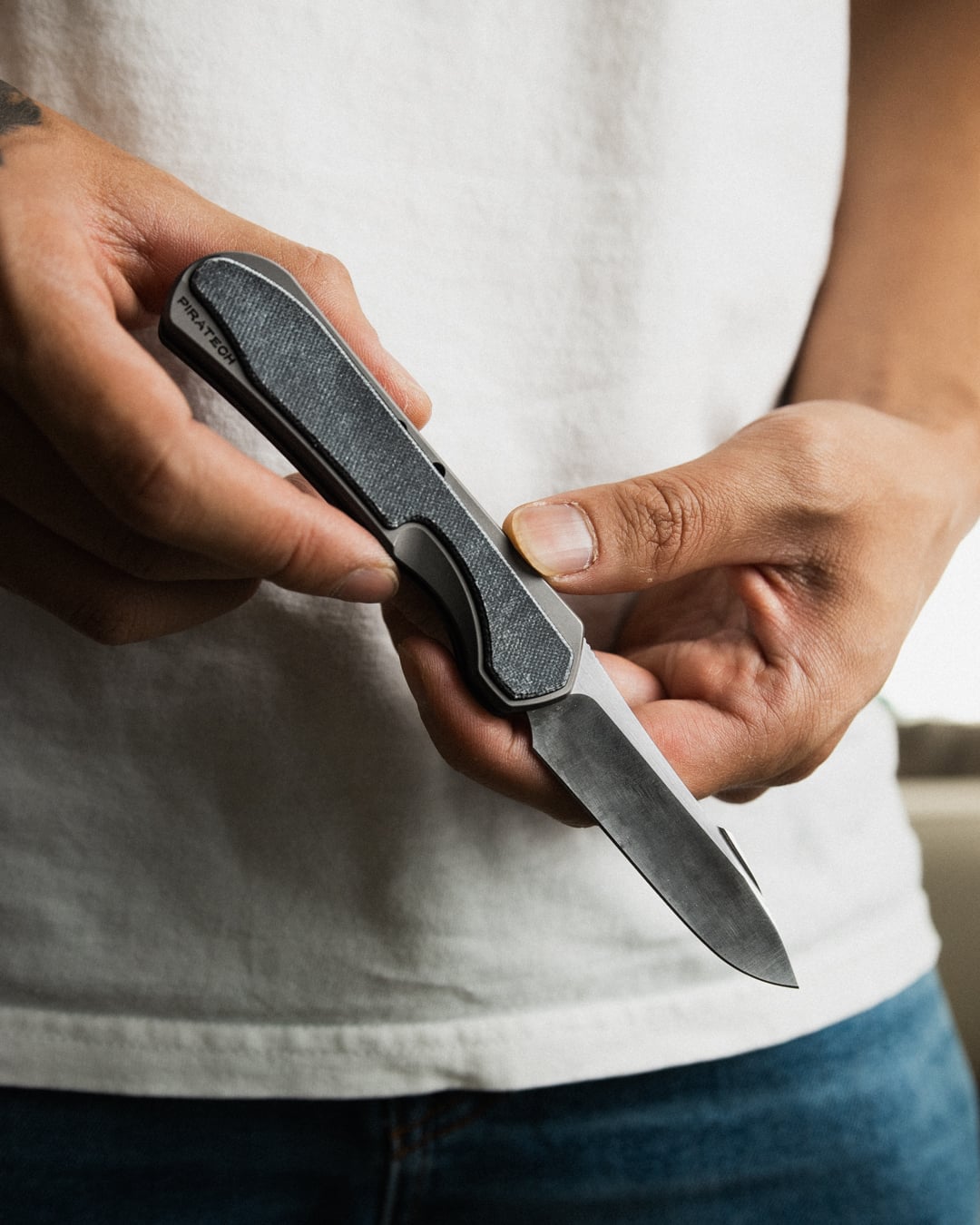-This article discusses a coefficient of cutting geometry design that we found crucial in creating an effective cutting tool, and how customers can evaluate the cutting performance of knives with it.
There's a lot of talk about the cutting geometry for a knife, which a knife company, like us, that designs all its knives in-house, should pay attention to. Therefore, we investigated the issue and found that the coefficient in the formula used to calculate the grinding angle could be the evaluation number/points for the cutting performance (passing through material).
- What determined the cutting performance(passing through material)?
As we all know, the lower the sharpening angle, the sharper the edge; the same applies to the cutting performance after the material is cut and the blade passes through it.
Since the material has its natural form as a whole, there will be force from both sides of the opened material pressing on the blade to resist the material being bent out by the blade passing through. The force we called material tension. The bigger the grinding angle, the greater the angle of material being bent, and the greater the resistance(tension) will be until the material breaks.
Also, the larger the grinding angle, the greater the resolution force (in the direction against the blade's passage) from the tension, which makes the cutting harder.
- How to calculate the grinding angle?
There are two different type of grindings so we will discuss this in 2 cases, flat grind and hollow grind.
- Flat grind
Flat grind is the simple triangle that we could calculate with the factors we know and use the law of triangles.
As we know, the thickness of the blade and we could measure the width of the grind, then we could form a right triangle with half of the blade thickness and the width of the grind as two legs.
For pocket knives which should be for light duties, the CGC equal to or lower than 0.1 would be a great performer.
2. Hollow grind
For hollow grind, the case becomes complicated. Since the grind is a curve, the grind angle is slight near the edge and increases as it approaches the spine.
Yet, we could still use the same method to calculate the angle or cutting performance points/CGC since if the material you cut with is hard then it will evantually hit the end of the grind close to the spine and create the same angle as flat grind. However, the hollow grind will have less blade touching the material so that the friction would be less.
If the material is soft with no tensions, it will stick to the surface of the blade; at that point, there is no need to discuss the cutting performance of angles, but only friction.
- Why could the CGC in this formula be a simple way to rank or evaluate the cutting performance of the knife?
As we listed the formula above, Tangent and ArcTangent are not easy for people to calculate mentally. Yet, the Cutting Geometry Coefficient (CGC) in the formula is relevant to the result (angle) enough, and it is also a simple division that can be calculated mentally or on paper.
- Why do we need to know this, and what could this bring us?
This is very useful for all the knife people and mainly for three groups of people.
- Designers
- Knife companies
- Knife users
For designers, you can easily calculate the CGC of your design, allowing you to know before production how well your knife design will perform compared to the knives you own. Or when you are designing a knife, you want your design to perform better than some knives or be the same as some knives; you would then have a clue about what to adjust and the exact number of the adjustment.
For knife companies, you can calculate the knife designs you received and determine whether they meet your performance needs for the product lines before producing prototypes. Save a significant amount of money by eliminating the need for prototypes to test the cutting geometry.
For knife users, you can use CGC to compare the knife you have and the one you would like to buy, without testing it in real life. Make fewer wrong purchases and can shop online confidently without testing in real life.



